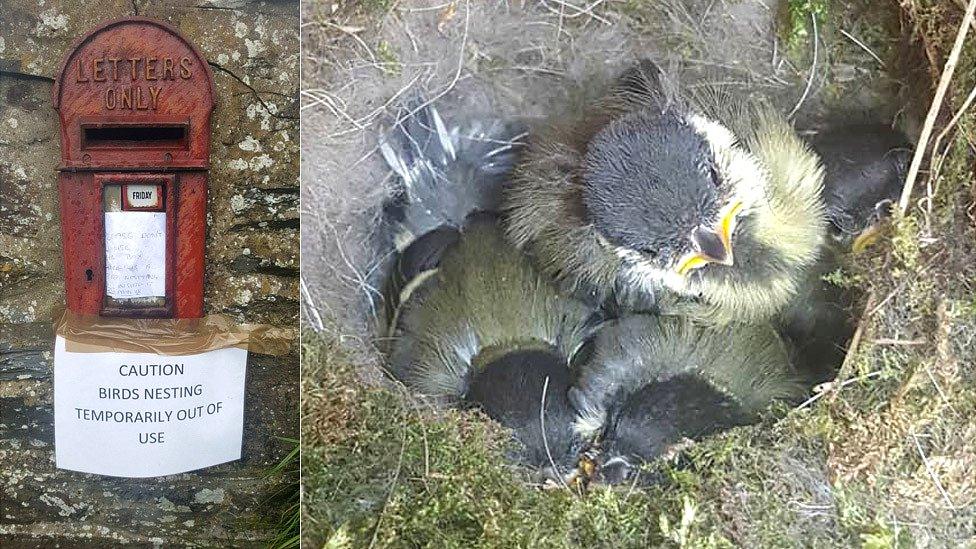Smoking shelter study after bird's nest discovery
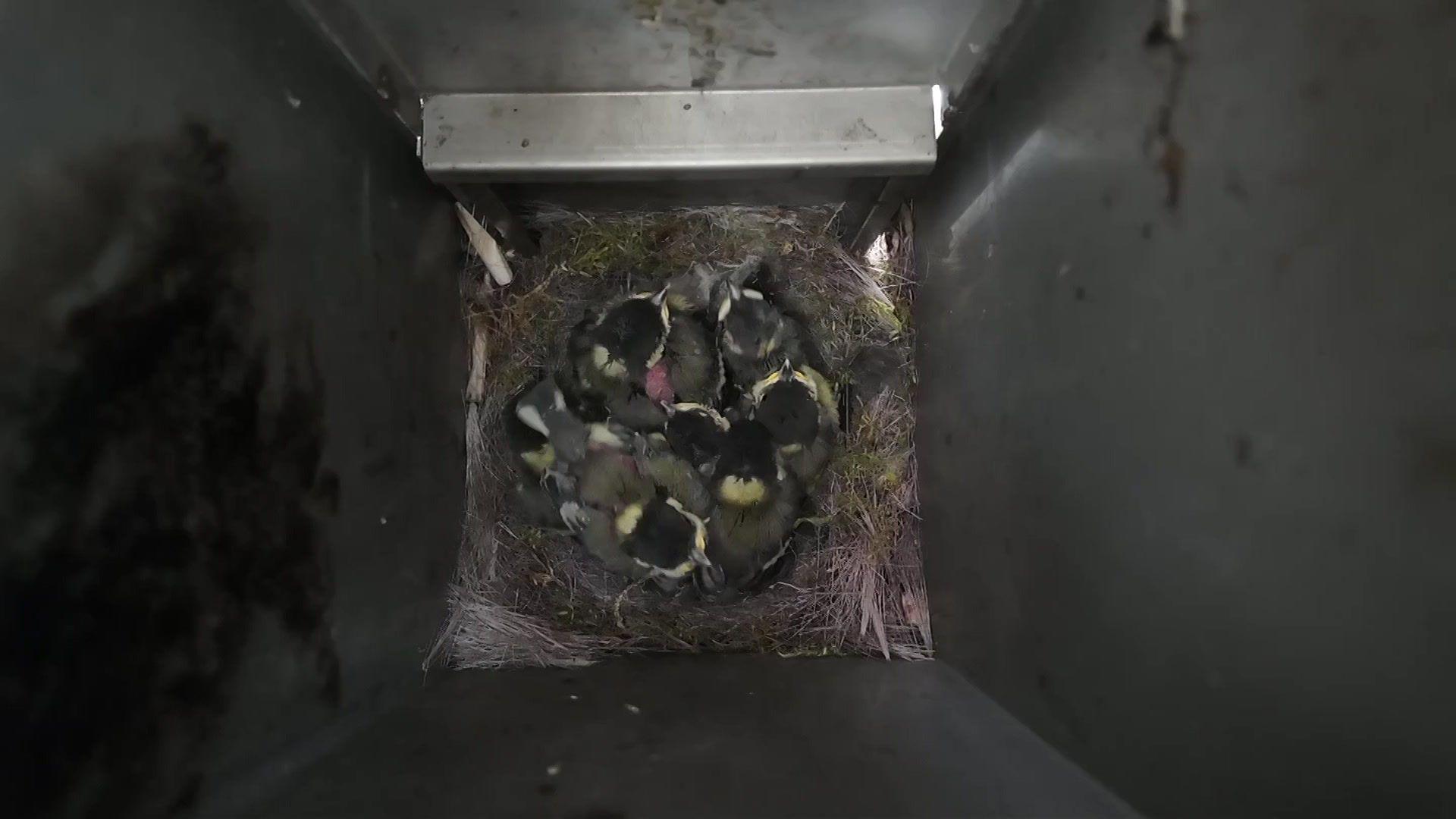
The brood seems to be thriving, with 10 of the twelve eggs already hatched
- Published
A smoking shelter has become the centre of a scientific study after a chance discovery of a bird's nest in one of the smoking bins.
Joanne Olsen from the hydraulics manufacturer HYDAC Technology based in Windrush Park in Witney, Oxfordshire, opened the bin to find the great tit nest and eggs.
Douglas Russell, senior curator for birds' eggs and nests at the Natural History Museum (NHM) in Tring, Hertfordshire, said scientists thought birds were choosing cigarette ends as materials to add to nests "because it decreases parasite load" as the nicotine "kills parasites".
The closely-monitored nest will be collected for chemical analysis by the NHM team after the chicks have left it.
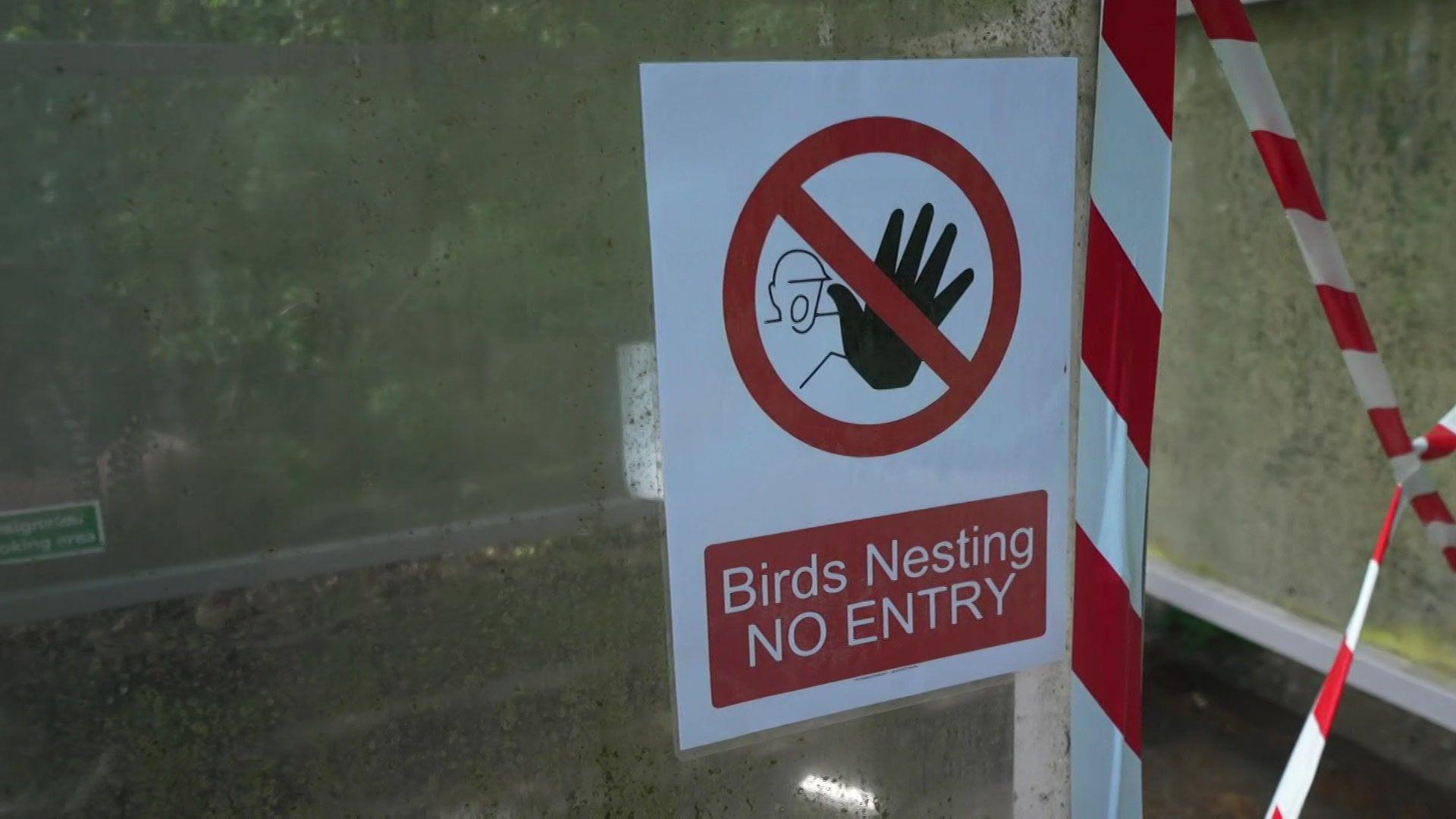
Mr Russell said it was "a wonderful opportunity" to study the behaviour
Ms Olsen said her colleague had thought there had been a frog at the smoking point at first because it had jumped up.
"So I went and retrieved the key, opened the back and there was a nest with eggs inside."
Ms Olsen reported the nest to the RSPB who in turn contacted the team behind the study.
George Candelin, keeper of the swifts at the University of Oxford Museum of Natural History, has been monitoring the temperatures inside and outside of the metal container with Ms Olsen's help.
"We've had temperatures up in the high 30s, the perspex itself on one occasion was over 40C," he said.
He added he was "amazed" that the birds had been "so comfortable with people so close".
"We only go in the shelter for a few minutes to take the readings but you can stand over in the corner there and you'll see the birds coming in and out totally unaffected by it."

George Candelin has been monitoring the temperatures inside and outside of the metal container
Mr Russell said it was "a wonderful opportunity" to study the behaviour.
"We also know that birds pick up cigarette ends and incorporate them into nests," he said.
"And we think that birds are choosing those cigarette ends a materials to add to nests because it decreases parasite load because the nicotine kills parasites."
But Mr Russell also previously said there were more than 7,000 chemicals found in cigarettes and smoke, including some 80 chemicals known to cause cancer.
"You're sucking in all those horrible compounds that are associated with cigarette smoke but you're also drawing in the road pollutants as well.
"And those are then getting concentrated within the bin, so either way it is a highly toxic, highly awful environment in which to bring up your young."
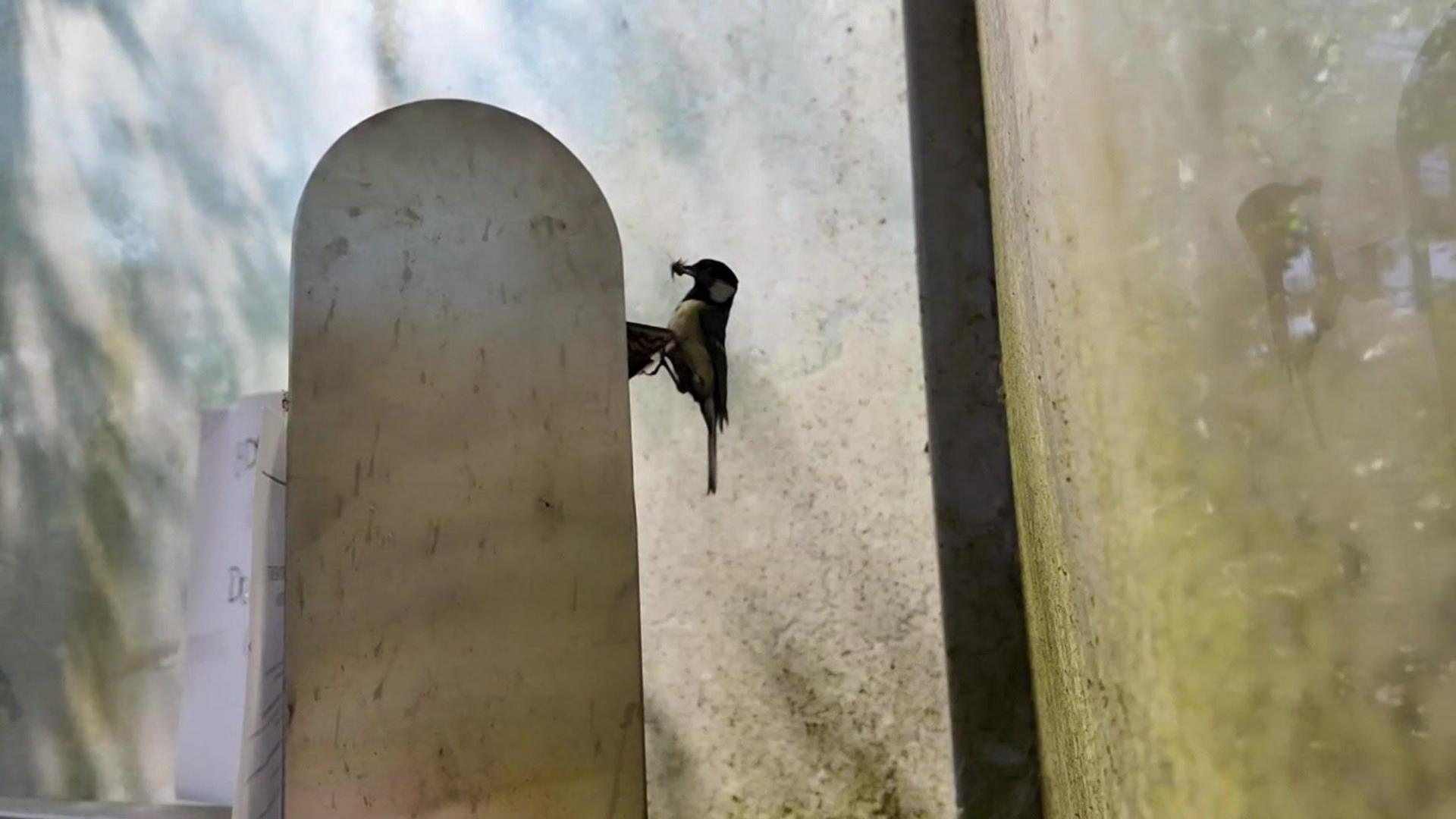
Mr Russell said if there were more nest boxes the birds would use them
Currently, the brood seems to be thriving, with 10 of the twelve eggs already hatched.
The chicks, which have been ringed under license, look set to leave the nest in the coming days.
Mr Russell said the research aimed to draw attention to the widespread behaviour and to "try to understand what the chemical exposure to those young within that particular nesting environment is".
"But I think the real positive from this is what it shows you is we need to put up more nest boxes," he said.
"If you put up more nest boxes even in these urban environments, the birds will use them."
Get in touch
Do you have a story BBC Oxfordshire should cover?
You can follow BBC Oxfordshire on Facebook, external, X (Twitter), external, or Instagram, external.
- Published23 May 2024
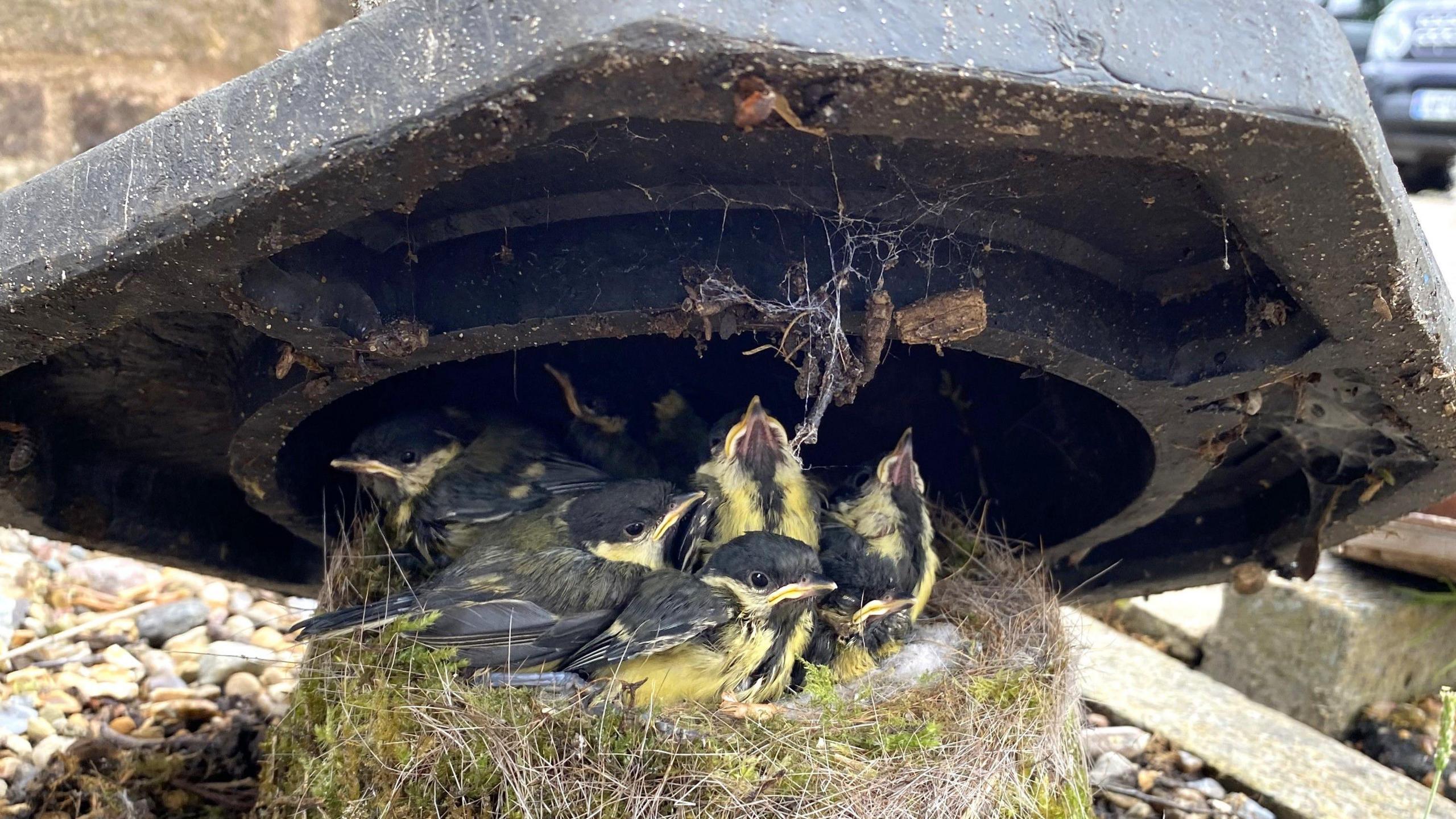
- Published7 April 2020
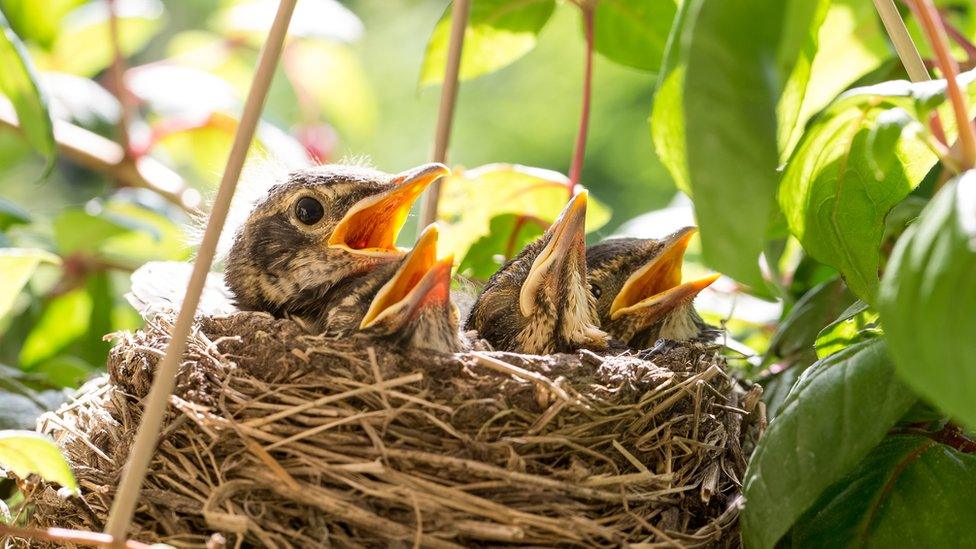
- Published13 June 2018
